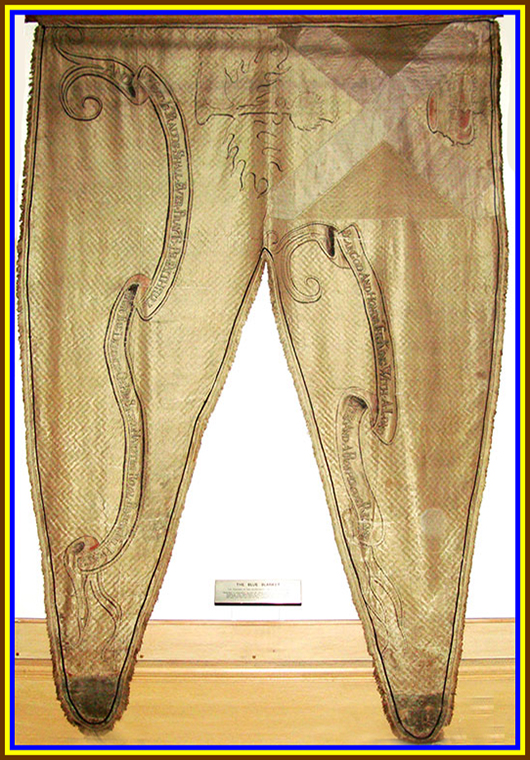


THE BLUE BLANKET - 1482
King James III was an unusual king in that he was prepared to ignore the great
magnates of the land and appoint to positions we would now call ministerial
CUSTOMS IN CONNECTION WITH THE BLUE BANNER
This was the ancient banner of the trades of Edinburgh. On its appearance, not
only the artificers were obliged to repair it, but all the artificers or craftsmen
or civil service jobs people whom he considered suitable. The great nobles
believed these jobs to be theirs by right, so this got him into deep trouble.
In 1482, in the face of a rebellion by the nobility, he also found himself
under pressure from an English army sent by King Edward IV: at this point
too the king was seized by two of his uncles and imprisoned in Edinburgh Castle.
The details of what happened next are obscure, but with the help of his wife,
Margaret of Denmark and other supporters James was set free. These supporters
included the Edinburgh craftsmen to whom he presented a banner ten feet two
inches long and six feet six inches wide with a blue background.
This was the famous Blue Blanket, entrusted into the keeping of the Edinburgh Hammermen,
i.e. mediaeval blacksmiths and engineers and the like and apparently if the
Deacon Convener of the Trades of Edinburgh causes this banner to be unfurled
in public all the craftsmen in Scotland are supposed to rally to his side
in support of the king or queen. Thankfully, this has not been recently tested!
However, the blue blanket is a famous legend to this very day; there was a public
house in the High Street named after it and at least two versions of the banner
itself still exist, one in the Trades Maiden Hospital and one in the National
Museum of Scotland.![]()
within Scotland were bound to follow and fight under the Convener who took charge of it.
According to an old tradition, this standard was employed in the
Holy Wars by a
body of crusading citizens of Edinburgh, and was the first that was planted on
the walls of Jerusalem, when that city was stormed by the
Christian army under
the famous Godfrey de Bouillon.
It is told in connection with this standard, that James III, having been kept a prisoner for nine months in the Castle
of Edinburgh, by his rebellious nobles, was freed by the
citizens of Edinburgh,
who raised the Blue Blanket, assaulted the Castle and took it by surprise.
Out of gratitude for their seasonable loyalty, James, besides certain
privileges, presented them with another banner - a blue silken pennon,
with powers to display the same in defence of their King, country, and
their own rights, when these were assailed.
The original and more celebrated
banner is, we are glad to be able to state, also still in existence, and was
exhibited at the opening of St. Giles' Church. ![]()
All rights reserved © 2023 Mither Shed